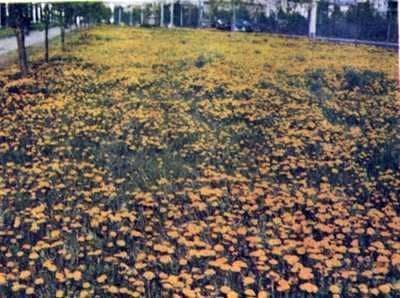
Our country is very rich in melliferous plants. They conceal huge reserves of nectar. Hundreds of thousands of tons of this healing liquid gold are poured over flowering meadows, fields and forests. But they grow in different places, often so far from the apiaries that the bees can not reach them.
From their nests for honey they can fly for 3-4 km. Of course, it is better when the honey plants are nearer or very near.
Then bees spend less time and energy, spend a little honey – their fuel – on the road. After all, the bee, knowing how to determine the distance to the honey, in the hive is stocked with sweet “gasoline”, so that it is enough for both ends. The further the source of nectar, the more it fills the honey ventricle. As a result, from remote arrays, each time it brings less honey than with neighbors. The number of flights also decreases. The closer the honey, the more the family procures honey. Therefore, apiaries are brought to the mead.
Transportation of bees to sources of nectar beekeepers is called a nomad. Perhaps, in those remote times, when a man first took wild bees and, together with the nests, moved them from the forest closer to his dwelling, and the thought arose of moving, of wandering with them from the medonos to the medonos. Beekeepers search for flowering massifs, determine the place of the apiary’s parking, load the hives into motor vehicles and, overnight, transfer them to new, more abundant nectariferous “pastures”.
For spring and summer, bees are transported repeatedly. At first on early flowering plants – willow, then in gardens, on meadow motley grass, then on linden, next – on buckwheat, sunflower or on other strong medonosy. On the virgin land, beekeepers transfer their bees up to ten times a season. Not only beekeepers of large apiaries and trusses bring bees to the honey bees, but also amateur beekeepers. At the buckwheat field or on cotton, in lime trees or in fields with honey grass grasses, you can see amateur apiaries and then a camp tent or a small detached house where the owners of these bee colonies live.
Kochevka is honey for sure. Modern industrial beekeeping is very mobile, mobile. Without nomads, it can not exist. In the past, beekeepers brought bees to the honey combs on horses or bulls harnessed to carts, and in mountainous places – by packs. Now for long distances, bees are transported in large-capacity heavy vehicles, sometimes they are transported on transport planes. In hard-to-reach taiga and mountainous places use helicopters.
To unusual passengers carried high speeds on the ground and in the air safely and did not get lost on the way, transportation is carefully prepared. This free sunny tribe is alien to any isolation, but here it is necessary to close the exit from the nest tightly. Even from one this bee is strongly aroused. The temperature rises rapidly in the hives.
Sensing the danger, the insects gather into the zobiks food, the air in the hive is oversaturated with water vapor and carbon dioxide. And during the transportation, especially when jerking, excitement reaches the limit. Very difficult conditions are created. Families for some 5-7 minutes can die from lack of oxygen, excess carbon dioxide and humidity. The bees are steamed, become black.
To avoid such consequences, it is necessary to ensure good air access to the nests. Instead of ceilings, nesting nets are put on the nests. The ventilation nomadic grid is a frame 40 mm high by the size of the hive housing, in which a wire or kapron grid with cells 2×2 or 3×3 mm is stretched. Through it, the hot hot air of the hive will be exchanged with cool outside air with the help of bee-ventilators. During the movement, a breeze is created, which blows the hive and further enhances the ventilation of the nest. Quite normal conditions are created.
Since the hives are dismountable and consist of separate parts, they are tied together so that they do not crumble. They are fastened with metal bands and belts, locks, such as on milk flasks, with cables.
The hives are loaded in the evening, after all the bees return home. The car is loaded from the cab, lowering the side and rear sides. Depending on how tall the hives are (in summer they are higher than in spring), they are placed in 2 or 3 tiers. For better ventilation, long bars are placed between the tiers. Voz are well connected so that the hives do not move.
From large beekeeping farms in the night are sent whole road trains, loaded with hives.
On a new place they are unloaded and immediately they open the tapes. After an approximate flight without delay, the bees are included in the honey collection. And as if there was not this difficult path. Cells again begin to weigh heavier.
Yes, I have to go for honey. Honey is now on wheels. Many get it in one place in our time, when the earth is being used intensively, is no longer possible. The work spent on nomadic, a hundred times pay off. Whoever at least once will bring the bees to the blossoming honey-combs and see what this gives, he will forever remain a beekeeper-nomad.
Осы хищные. Рамки для катка.
Young Beekeeper